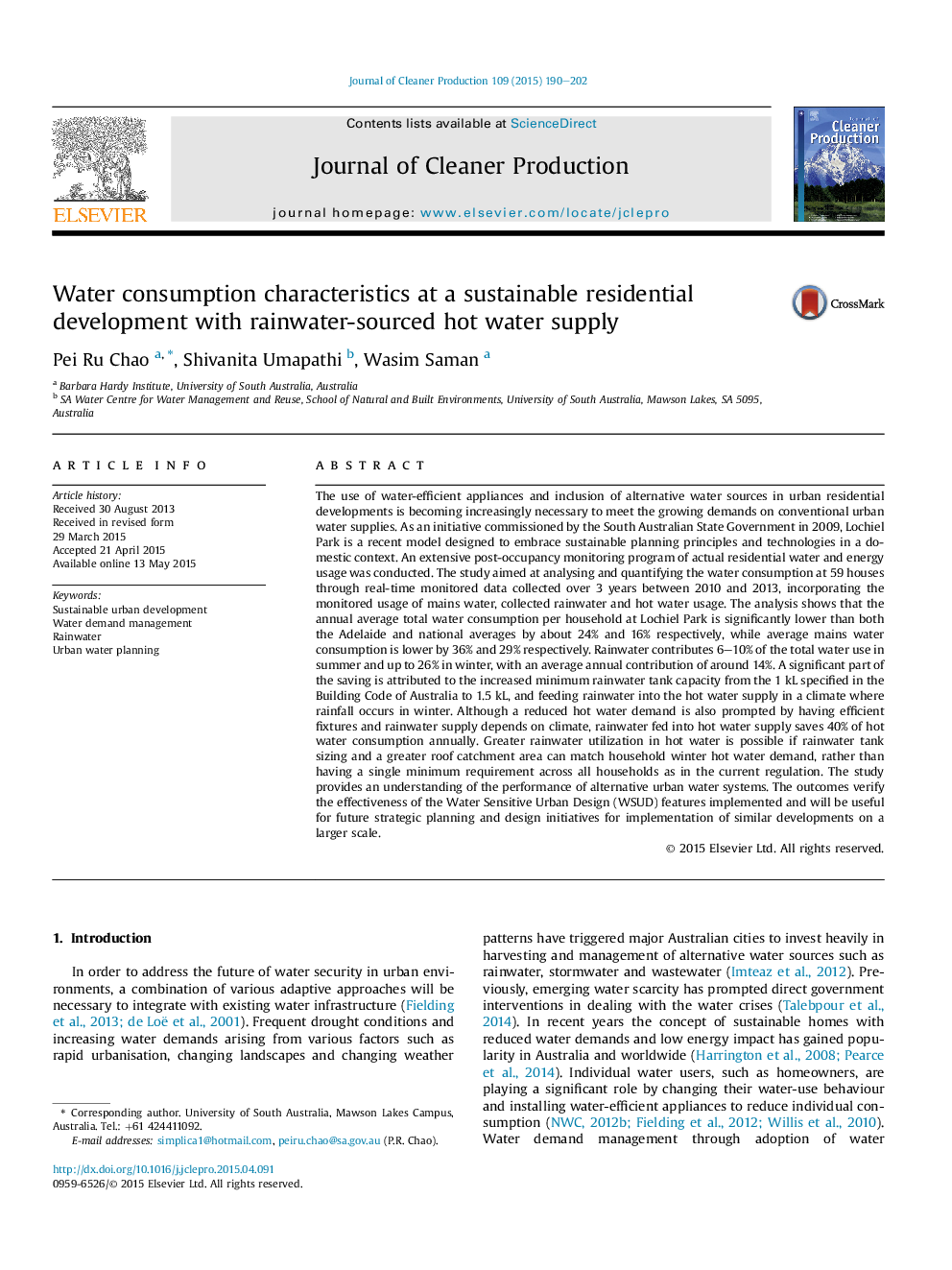| کد مقاله | کد نشریه | سال انتشار | مقاله انگلیسی | نسخه تمام متن |
|---|---|---|---|---|
| 1744507 | 1522138 | 2015 | 13 صفحه PDF | دانلود رایگان |
عنوان انگلیسی مقاله ISI
Water consumption characteristics at a sustainable residential development with rainwater-sourced hot water supply
ترجمه فارسی عنوان
خصوصیات آب در توسعه پایدار مسکونی با تامین آب داغ آب باران
دانلود مقاله + سفارش ترجمه
دانلود مقاله ISI انگلیسی
رایگان برای ایرانیان
کلمات کلیدی
توسعه شهری پایدار، مدیریت تقاضای آب، آب باران، برنامه ریزی آب شهری،
موضوعات مرتبط
مهندسی و علوم پایه
مهندسی انرژی
انرژی های تجدید پذیر، توسعه پایدار و محیط زیست
چکیده انگلیسی
The use of water-efficient appliances and inclusion of alternative water sources in urban residential developments is becoming increasingly necessary to meet the growing demands on conventional urban water supplies. As an initiative commissioned by the South Australian State Government in 2009, Lochiel Park is a recent model designed to embrace sustainable planning principles and technologies in a domestic context. An extensive post-occupancy monitoring program of actual residential water and energy usage was conducted. The study aimed at analysing and quantifying the water consumption at 59 houses through real-time monitored data collected over 3 years between 2010 and 2013, incorporating the monitored usage of mains water, collected rainwater and hot water usage. The analysis shows that the annual average total water consumption per household at Lochiel Park is significantly lower than both the Adelaide and national averages by about 24% and 16% respectively, while average mains water consumption is lower by 36% and 29% respectively. Rainwater contributes 6-10% of the total water use in summer and up to 26% in winter, with an average annual contribution of around 14%. A significant part of the saving is attributed to the increased minimum rainwater tank capacity from the 1Â kL specified in the Building Code of Australia to 1.5Â kL, and feeding rainwater into the hot water supply in a climate where rainfall occurs in winter. Although a reduced hot water demand is also prompted by having efficient fixtures and rainwater supply depends on climate, rainwater fed into hot water supply saves 40% of hot water consumption annually. Greater rainwater utilization in hot water is possible if rainwater tank sizing and a greater roof catchment area can match household winter hot water demand, rather than having a single minimum requirement across all households as in the current regulation. The study provides an understanding of the performance of alternative urban water systems. The outcomes verify the effectiveness of the Water Sensitive Urban Design (WSUD) features implemented and will be useful for future strategic planning and design initiatives for implementation of similar developments on a larger scale.
ناشر
Database: Elsevier - ScienceDirect (ساینس دایرکت)
Journal: Journal of Cleaner Production - Volume 109, 16 December 2015, Pages 190-202
Journal: Journal of Cleaner Production - Volume 109, 16 December 2015, Pages 190-202
نویسندگان
Pei Ru Chao, Shivanita Umapathi, Wasim Saman,
